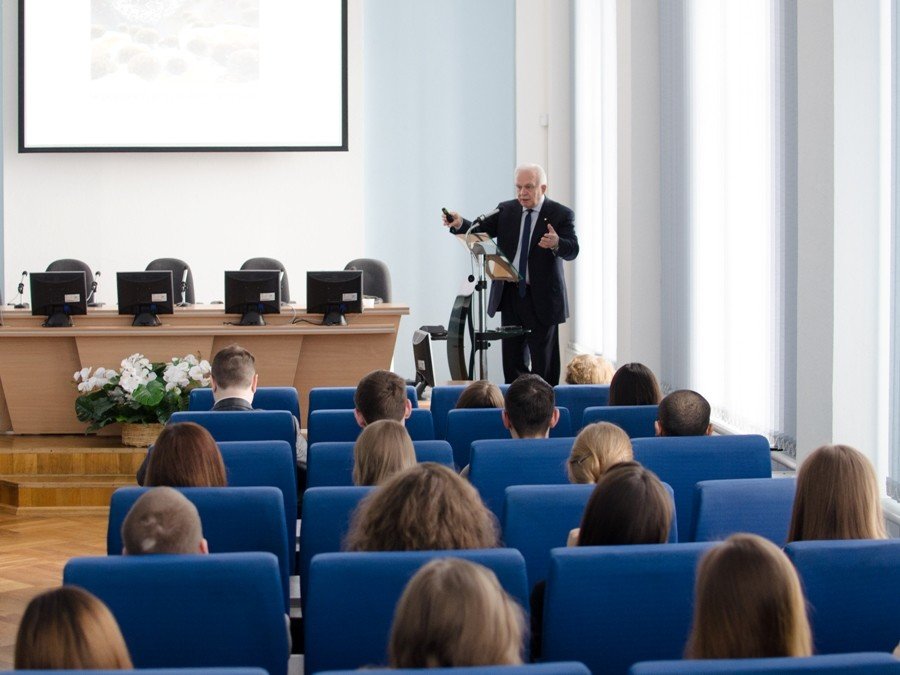The researcher told students how a correct lifestyle will help them avoid dangerous illnesses.
Doctor of medical sciences, current member of the Russian Academy of Medical Sciences and the RAS, professor and academic Valery Chereshnev visited South Ural State University.
Within his visit he held a lecture for students about the nature of the Human Immunodeficiency Virus and its new mutations. HIV is a virus which leads to slowly-progressing illness. The virus infects immune system cells. As a result, the immune system is suppressed and the acquired immune deficiency virus (AIDS) develops.
Valery Aleksandrovich told the students that this virus now yields to treatment. Thanks to modern medicine, an infected individual can live until 70-80 using special medications. This virus was discovered by researchers Françoise Barré-Sinoussi and Luke Montagnier in 1983, for which they received the Nobel Peace Prize. Before this, arguments about where this virus came from never died out. It turns out, that it was passed on to people from primates (mainly chimpanzees).
Valery Aleksandrovich called HIV a “mutant” and “chameleon” for its ability to penetrate human cells (leukocytes) and completely change them, at the same time, penetrating different cells.
“All of the animal viruses that we know also spread to humans. The swine flu, bird flu, and ant flu were all passed to us from animals. These are not the last viruses which the human body will acquire. There will also be new viruses, moreresistant to antibiotics, which will mutate quickly,” says Valery Chereshnev.
Across the world today, 35-40 million people are living with the human immunodeficiency virus. Of those, 1 million are in Russia.
In their studies, researchers found that there is not only a virus, but also a protein which solidifies within the body in a certain way and causes the Kuru disease (shaking) and different illnesses. This is called the prion protein.

Valery Aleksandrovich said that there are theories now that Alzheimers and Parkinsons, that is, the illnesses tied to disturbances in the nervous system’s work, develop in people when these prions appear in the human body and “adhere” to one another around a nerve.
“Earlier, when human life expectancy was 30-40, people died from infections and injuries. When it rose to 60-70, they began to die from tumors. Now, when people live until 70-80, they encounter neurodegenerative illnesses,” says the researcher.
It’s possible that research on prions will help cure people with Parkinson’s and Alzheimer’s. But in Valery Aleksandrovich’s opinion, the most important thing is to lead a proper and healthy lifestyle, actively working on mental activities.
“Take a look at the Nobel laureates! Most of the men lived until 90 years old! And why? Because science stimulates the nervous system and improves human life expectancy,” said Valery Chereshnev, sharing his opinions.
A culture of education, healthy lifestyle, and active involvement in science will help people avoid many dangerous and difficult illnesses such as HIV, AIDS, and more.




